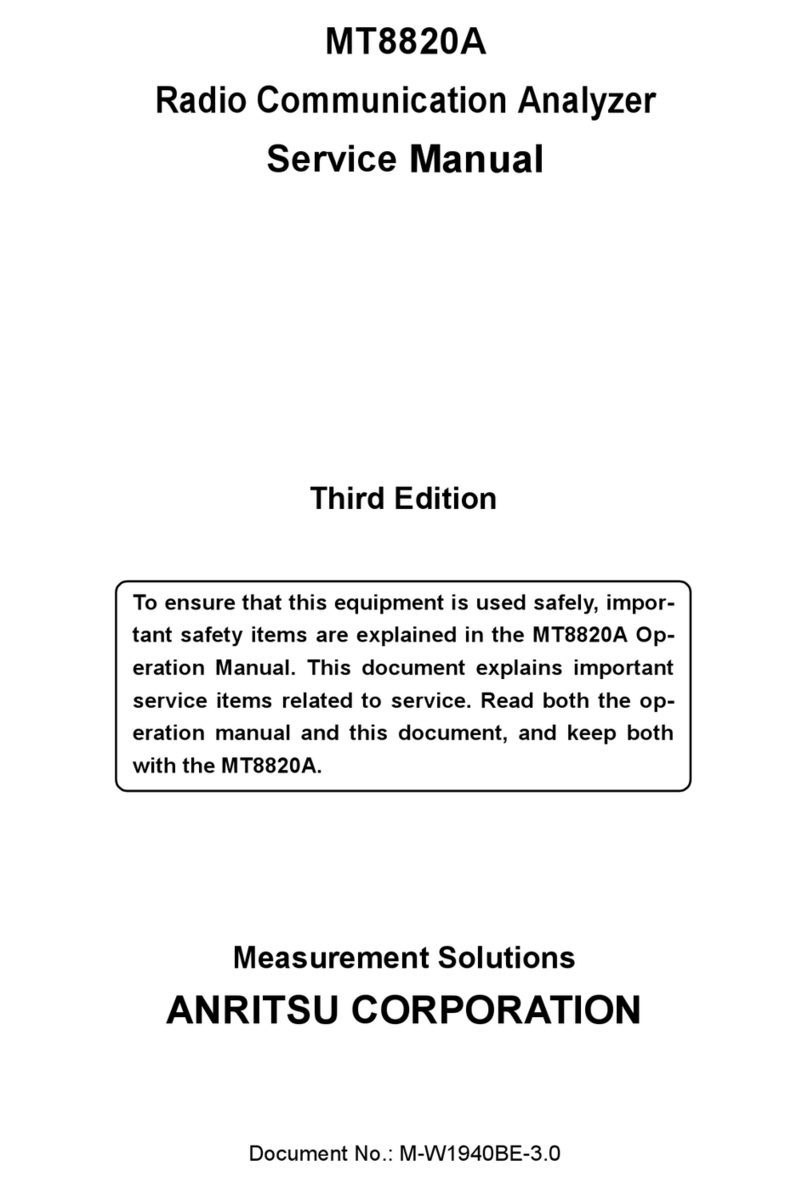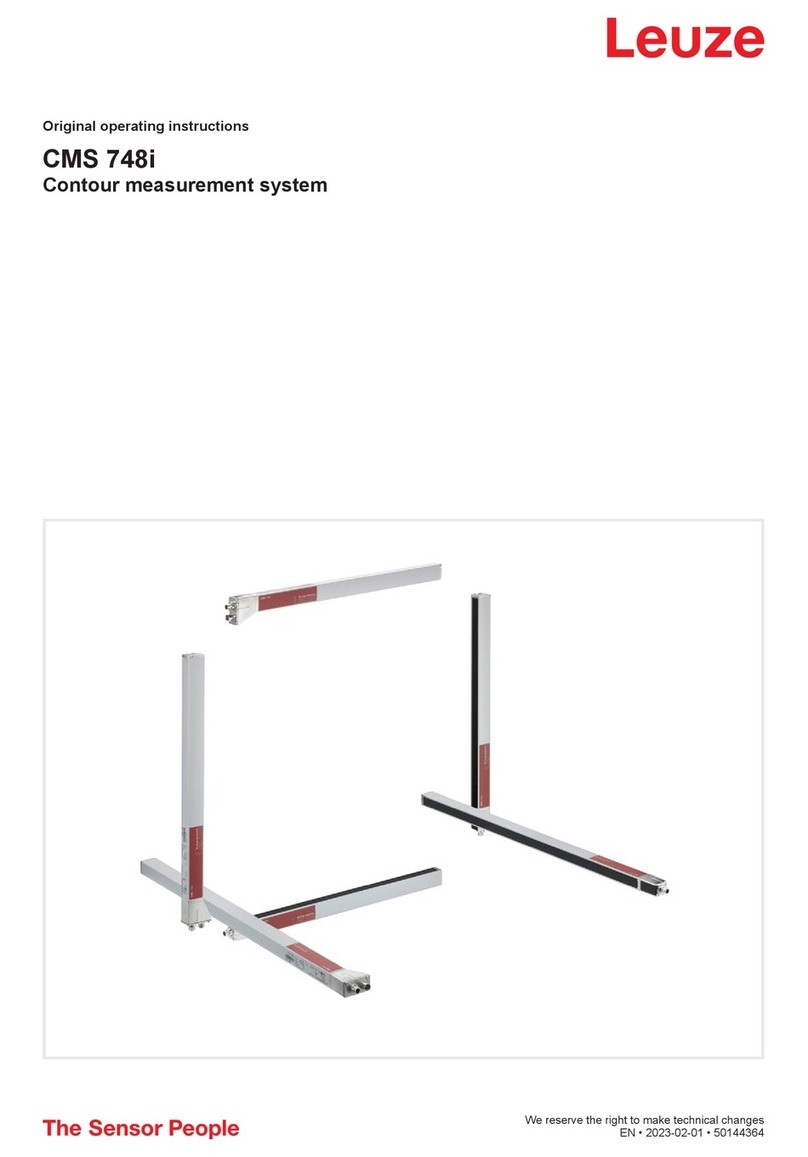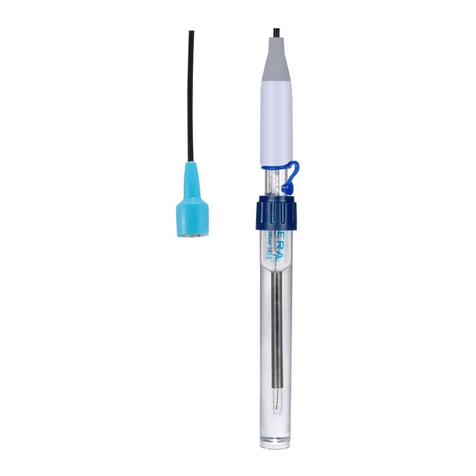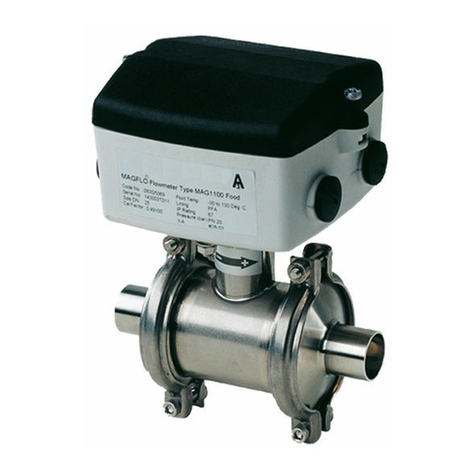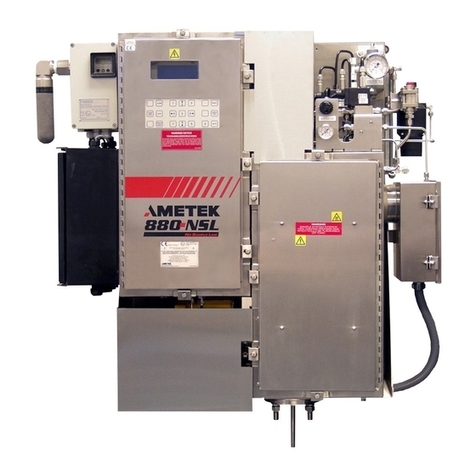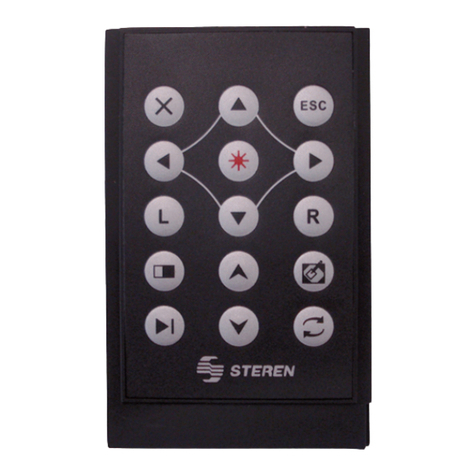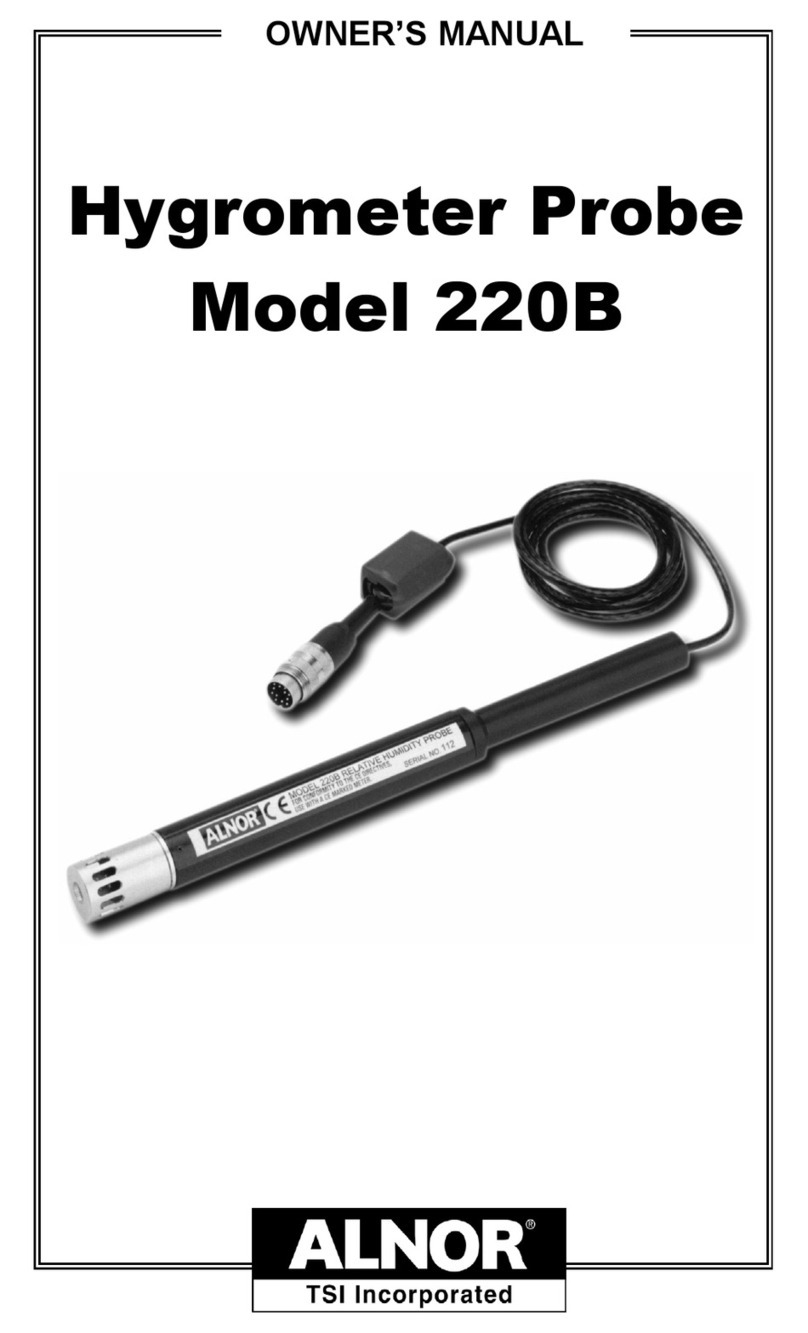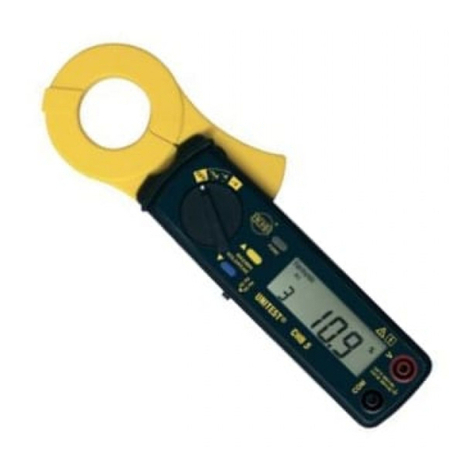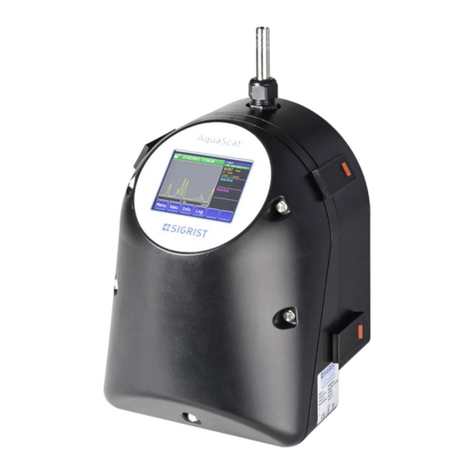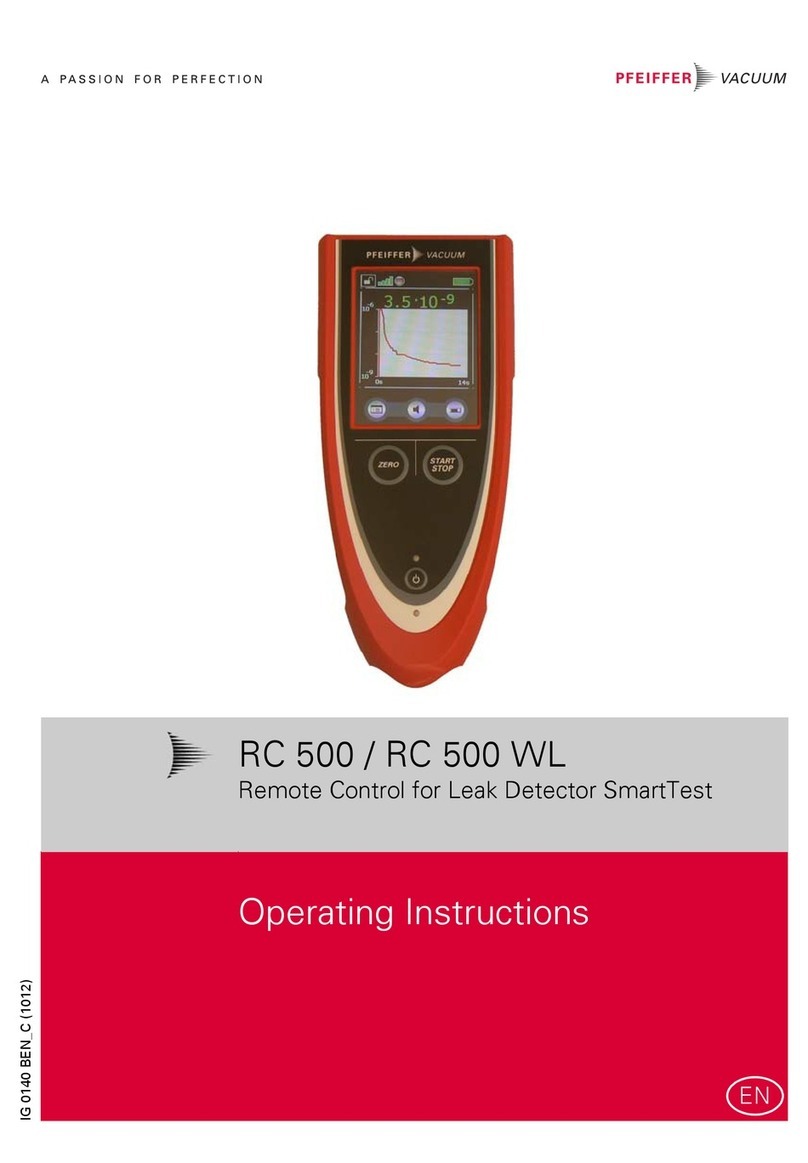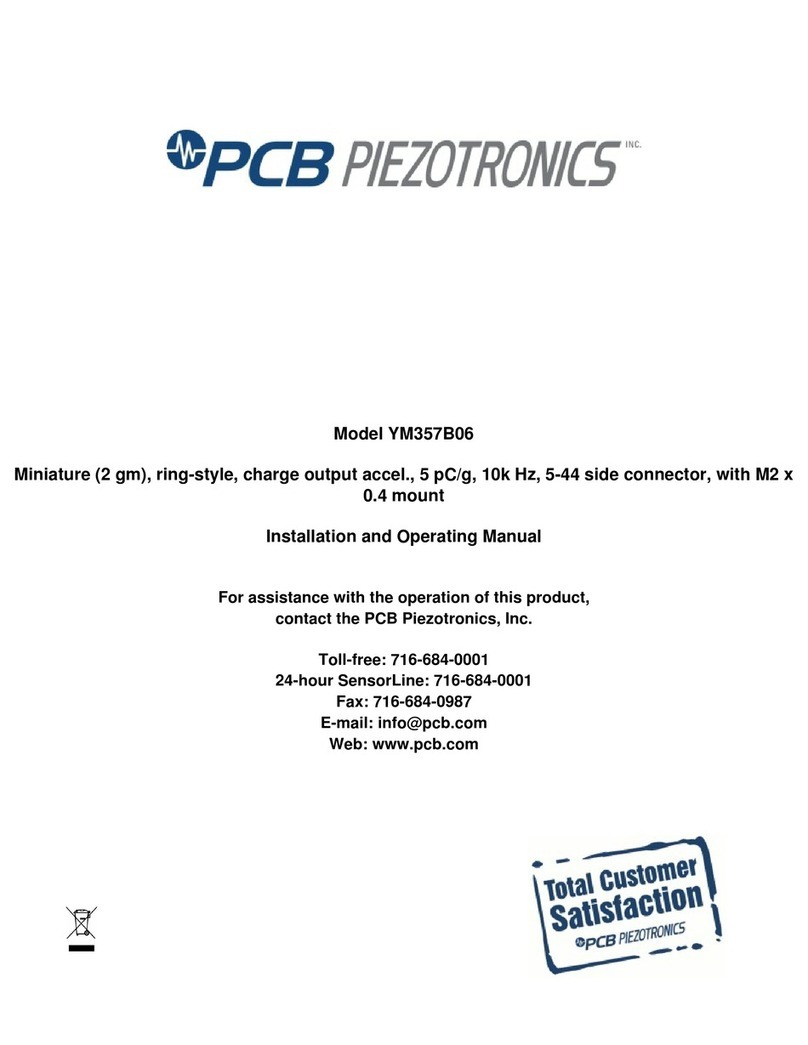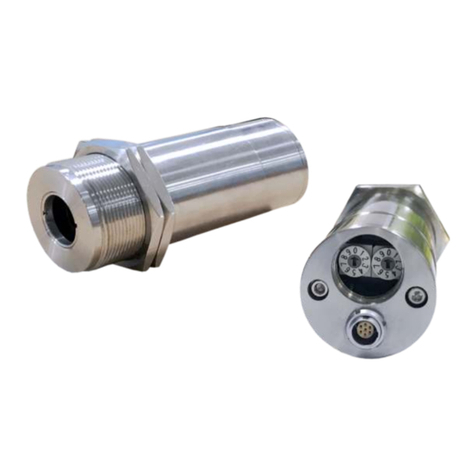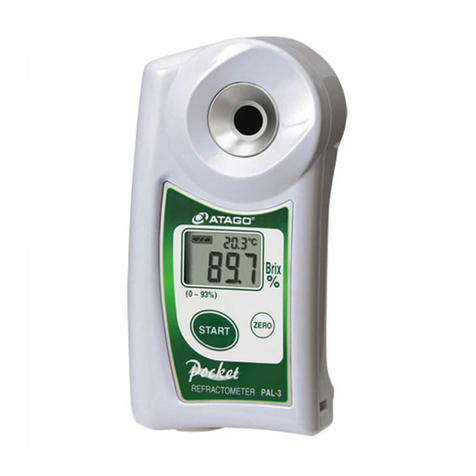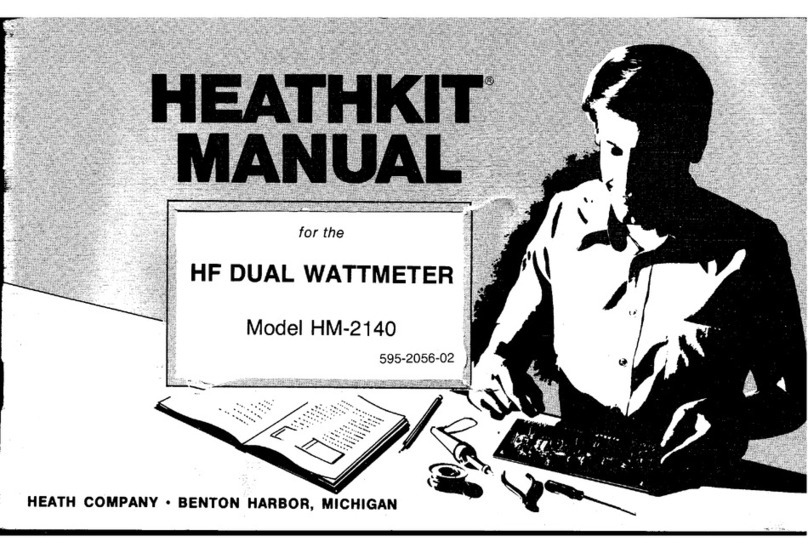trig TI106 User manual

Trig TI106 Course Deviation Indicator
Trig TI106 Course Deviation IndicatorTrig TI106 Course Deviation Indicator
Trig TI106 Course Deviation Indicator
Installation Manual
Installation ManualInstallation Manual
Installation Manual
02179-00-AA
20 June 2019
Trig Avionics Europe .V.
Hardwareweg 3
3821 L Amersfoort
Netherlands
Copyright Trig Avionics Europe .V. 2019

This page intentionally left blank

TI106 CDI Installation Manual 20 June 2019
02179-00 Issue AA
______________________
Trig Avionics Europe B.V. Page i
CONTENTS
1.
PREFACE ....................................................................................................................................... 1
1.1
P
URPOSE
...................................................................................................................................... 1
1.2
S
COPE
........................................................................................................................................ 1
1.3
C
HANGES FROM
P
REVIOUS
I
SSUE
.............................................................................................. 1
1.4
T
ERMS AND
D
EFINITIONS
.......................................................................................................... 1
2.
INTRODUCTION .......................................................................................................................... 2
2.1
G
ENERAL
D
ESCRIPTION
............................................................................................................. 2
2.2
T
ECHNICAL
S
PECIFICATION
....................................................................................................... 2
2.3
Q
UALIFICATION
......................................................................................................................... 3
3.
PRE-INSTALLATION .................................................................................................................. 4
3.1
G
ENERAL
I
NFORMATION
........................................................................................................... 4
3.2
U
NPACKING AND
I
NSPECTING
E
QUIPMENT
................................................................................ 4
3.2.1
Materials Supplied............................................................................................................ 4
3.2.2
Materials not supplied ...................................................................................................... 4
3.3
E
QUIPMENT
L
OCATION
.............................................................................................................. 4
3.4
C
ABLE
H
ARNESS
....................................................................................................................... 4
3.4.1
Wire Gauge Selection ....................................................................................................... 5
3.4.2
Interface Pinout ................................................................................................................ 6
3.5
L
IMITATIONS
............................................................................................................................. 7
3.6
R
EQUIREMENTS FOR
TSO’
D
VOR/ILS
S
YSTEM
........................................................................ 7
3.7
R
EQUIREMENTS FOR
TSO’
D
G
LIDESLOPE
S
YSTEM
.................................................................... 7
4.
INSTALLATION............................................................................................................................ 8
4.1
M
OUNTING
................................................................................................................................ 8
4.2
I
NSTALLATION
C
OMPLETION
..................................................................................................... 8
5.
OPERATION ................................................................................................................................ 10
5.1
P
RE
-I
NSTALLATION
T
ESTS
....................................................................................................... 10
5.2
A
NNUNCIATOR
D
IMMING
A
DJUSTMENT
.................................................................................. 10
5.3
O
PERATING
I
NSTRUCTIONS
...................................................................................................... 10
5.3.1
VOR Operation ............................................................................................................... 10
5.3.2
Localizer Operation........................................................................................................ 10
5.3.3
Glideslope Operation...................................................................................................... 10
6.
CONTINUED AIRWORTHINESS ............................................................................................ 12
6.1
M
AINTENANCE
........................................................................................................................ 12
7.
LIMITED WARRANTY.............................................................................................................. 13
APPENDIX A – ENVIRONMENTAL QUALIFICATION STATEMENT.................................... 14


TI106 CDI Installation Manual 20 June 2019
02179-00 Issue AA
______________________
Trig Avionics Europe B.V. Page 1
1. Preface
1.1 Purpose
This document describes the system descriptions, and technical specification, as well as the installation, electrical
and physical characteristics, limitations, environmental qualification, periodic maintenance procedures and
corrective maintenance procedures for the TI106 Course Deviation Indicator (CDI).
1.2 Scope
This document applies to the Trig TI106 CDI.
1.3 Changes from Previous Issue
This is the first issue.
1.4 Terms and Definitions
BC Back Course
CDI Course Deviation Indicator
DC Direct Current
DME Distance Measurement Equipment
FAA Federal Aviation Administration
GPS Global Positioning System
ILS Instrument Landing System
LED Light Emitting Diode
OBS Omni Bearing Selector
ORZ Omni Range Zeroed
RF Radio Frequency
TSO Technical Standard Order
VHF Very High Frequency
VOR VHF Omnidirectional Range

TI106 CDI Installation Manual 20 June 2019
02179-00 Issue AA
______________________
Page 2 Trig Avionics Europe B.V.
2. Introduction
2.1 General Description
The TI106 CDI is designed to operate with VHF and GPS navigational equipment to provide OMNI (VOR), GPS,
Localizer and Glideslope information.
The TI106 is designed to accept DC signals for Left/Right and Up/Down pointer deviation and Valid/Invalid
(“flag”) status from a remote mounted VOR converter. It also provides annunciations for NAV, BC, and GPS
indication of the incoming source or mode and a TO or FR (from) annunciation to indicate direction of the ground
signal or course waypoint from the aircraft.
The Omni Bearing Selector (OBS) course resolver provides the compass card position as an electrical output (a
phase reference signal which is ORZ zeroed to an industry standard 300°).
The TI106 CDI uses white LED unit lighting to illuminate the dial and pointers. It can be brightened or dimmed
with an external lighting bus voltage for 5, 14 or 28V systems. Additionally, the backlit LED annunciators are
automatically adjusted for appropriate brightness using a built-in photocell sensor which can be calibrated at the
time of installation.
2.2 Technical Specification
Characteristics Parameter Specification
Electrical
Characteristics
Input Voltage
12
–
32 VDC
Input Current (Maximum)
0.2 Amps
Lighting Input
5, 14, or 28 VDC
Annunciator Lighting Auto dimming control via internal photocell
(Adjustable)
OBS Resolver Electrical Zero 300° ±1° ORZ
Pointer Deviation Input Impedance
1k
Ω
±10%
Deflection Sensitivity
150mV ±10% full scale deflection
Valid Signal Input Impedance
1k
Ω
±10%
Valid Signal
260 mV ±10% to display pointers
To/From Indicator Input Impedance
200
Ω
±10%
Annunciator Sensitivity 40mV ±15%
Physical Attributes
Dimensions (Bezel)
3
-
1/8”
(80mm)
diameter
Dimensions (Chassis -
HxWxD
)
3.25” x 3.25” x 4.75” (82.5mm x 82.5mm x
120.6mm
)
Weight
1
.
3
pounds (0.
59
kg)
Cover Glass
HEA (anti
-
reflective) coated per MIL
-
C
-
14806
Mating Connectors
2
5
-
pin D
-
Sub
Mounting
Rear mount, see panel cut
-
out
Section 4.1.
Lighting
Light emitting diodes (LEDs)

TI106 CDI Installation Manual 20 June 2019
02179-00 Issue AA
______________________
Trig Avionics Europe B.V. Page 3
2.3 Qualification
Specifications
Qualification FAA TSO-C34e, C36e, C40c
EASA ETSO
-
C34e, C36e, 2C40c
Environmental Qualification
RTCA DO
-
160B/G (D
etails listed in
Appendix
-
A
)

TI106 CDI Installation Manual 20 June 2019
02179-00 Issue AA
______________________
Page 4 Trig Avionics Europe B.V.
3. Pre-Installation
3.1 General Information
This section contains information and considerations required to prepare for the TI106 CDI installation, including
provided equipment, panel location, wiring and other information.
3.2 Unpacking and Inspecting Equipment
When unpacking this equipment, make a visual inspection for evidence of any damage that may have occurred
during shipment.
3.2.1 Materials Supplied
3.2.2 Materials not supplied
3.3 Equipment Location
The TI106 CDI should be mounted as close to the pilot’s field of view as possible.
Consideration should be given to the depth behind the panel where the unit will be installed. Clearance for the unit
as well as its electrical connections and routing must be allowed. Be aware of routing cables near other electronics
or with other wire bundles that may contain high energy flow. Examples of these sources could include 400 Hz AC
or COM, DME, HF and transponder transmitter coax.
Use of shielded wire may be useful in isolating the low-level signals that drive the CDI from other interference.
Avoid sharp bends in cabling and routing near aircraft control cables. Also, avoid proximity and contact with aircraft
structures, avionics equipment, heat sources or other obstructions that could chafe or damage wires during flight and
cause undesirable effects.
No direct cooling is required. As with any electronic equipment, overall reliability may be increased if the TI106 is
not located near any high heat source or crowded next to other equipment.
The TI106 CDI is designed primarily to be installed in the instrument panel of the aircraft. However, within the
limitations of the environmental qualifications, other locations may be acceptable when considered within the
context of the specific application and with the appropriate installation certification.
3.4 Cable Harness
Construct the cable harness in accordance with the guidance detailed in Section 3.4.1 using industry-accepted
practices regarding aircraft wiring and applicable regulatory requirements and guidance.
Refer to Section 3.3: Equipment Location for routing precautions.
Unit Description Quantity Trig Part Number
TI106 CDI
1
01
913
-
00
TI106
Connector Kit
1
02121
-
00
Installation Manual
1
02179
-
00
Unit Description
Q
uantity
Specification
#6 UNC Screws
3
Max Length: 1.0”
Wire
As Required
22 AWG. (
See Section 3.4
)

TI106 CDI Installation Manual 20 June 2019
02179-00 Issue AA
______________________
Trig Avionics Europe B.V. Page 5
3.4.1 Wire Gauge Selection
Wire gauge should be 24 AWG or thicker (smaller AWG; 22, 20, etc.). Use of PTFE, ETFE, TFE, Teflon, or Tefzel
insulated wire is recommended for aircraft use per MIL-DTL-16878 or equivalent. Shielded twisted pair wiring per
M27500 or equivalent is recommended for any signal wires which may be exposed to sources interfering with the
integrity of the signal.

TI106 CDI Installation Manual 20 June 2019
02179-00 Issue AA
______________________
Page 6 Trig Avionics Europe B.V.
3.4.2 Interface Pinout
Pin
Signal
Direction
1
OBS Resolver H
Input
2
OBS Resolver C
Input
3
OBS Resolver D
Output
4
OBS Resolver F
Output
5 OBS Resolver E (NAV Common Ref) Output
6
OBS Resolver G (NAV Common Ref)
Output
7
+
VOR/Localizer
Valid
Input
8
-
VOR/
Localizer
Valid (NAV Common Ref)
Input
9
+ To
Input
10
+ From
Input
11 + Left Input
12
+ Right (NAV Common Ref)
Input
13
+ Up
Input
14
+ Down (Glideslope
Common Ref)
Input
15
+
Glideslope
Valid
Input
16
-
Glideslope
Valid (Glideslope
Common Ref)
Input
17
GPS Annunciator
Input
18
BC Annunciator
Input
19
+
12
-
32 VDC (Or pin 20)
*
Input
20
+
12
-
32 VDC (Or pin 19)
*
Input
21
Power Ground
Input
22
+
28V Lighting
Input
23
+
14V Lighting
Input
24
NAV Annunciator
Input
25
+
5V Lighting
Input
* Only one power input line required on either pin 19 or 20.
The following diagram shows the connector orientation as viewed from the wiring side.
Figure 1: J1 Connector View

TI106 CDI Installation Manual 20 June 2019
02179-00 Issue AA
______________________
Trig Avionics Europe B.V. Page 7
3.5 Limitations
The conditions and tests for TSO approval of this device are minimum performance standards. Those installing on
or in a specific type or class of aircraft must determine that the aircraft installation conditions are within the TSO
standards, specification of the TI106 CDI, and deviations listed below. TSO devices must have separate approval for
installation in an aircraft. The TI106 CDI may be installed only according to 14 CFR Part 43 or the applicable
airworthiness requirements.
3.6 Requirements for TSO’d VOR/ILS System
For a TSO’d VOR/ILS system the navigation receiver shall be certified to FAA TSO-C40a/b/c or TSO-C36c/d/e or
later.
3.7 Requirements for TSO’d Glideslope System
For a TSO’d glideslope the glideslope receiver/converter shall be certified to the standards of TSO-C34c/d/e or later.

TI106 CDI Installation Manual 20 June 2019
02179-00 Issue AA
______________________
Page 8 Trig Avionics Europe B.V.
4. Installation
This section contains interconnect diagrams, mounting dimensions and other information pertaining to the
installation of the TI106 CDI. After installation of cabling and before installation of the equipment, ensure that
power is applied only to the pins specified in the interconnect diagram.
4.1 Mounting
Install the TI106 CDI within the aircraft in accordance with the aircraft manufacturer’s instructions and the
following steps:
1. Verify that the instrument panel cut-out meets the requirements of Figure 2.
2. Secure the indicator to the instrument panel using the proper mounting hardware.
3. Connect the electrical connector(s) to the connector on the back of the unit.
Figure 2: Panel Cut-out (Inches)
4.2 Installation Completion
Prior to flight, verify the basic operation of the unit, interface with other equipment, lighting performance in various
conditions, and general expected performance.
Ø3.156
2.480
TYP
1.240
TYP
Ø0.156 (3X)
1.152
1.152
0.408
1.240 TYP
2.480 TYP
unit outline
(ref)

TI106 CDI Installation Manual 20 June 2019
02179-00 Issue AA
______________________
Trig Avionics Europe B.V. Page 9
3.250
3.250
1.625
Ø3.120
(Ø2.800)
1.625
3X 6-32 UNC -2B
on Ø3.500 B.C.,
equally spaced
(1.910 CG)
(1.670 CG)
0.125 4.584 MAX
1.217
0.765
0.206
J1, 25-Pin
D-sub Male
Figure 3: Outline Drawings (Inches)

TI106 CDI Installation Manual 20 June 2019
02179-00 Issue AA
______________________
Page 10 Trig Avionics Europe B.V.
5. Operation
5.1 Pre-Installation Tests
With the TI106 CDI disconnected, turn on the avionics master switch and verify that aircraft power on J1 pin 19 or
pin 20 is 12-32 VDC. Using an ohmmeter, verify pin 21 is aircraft ground.
5.2 Annunciator Dimming Adjustment
Following installation of the TI106 CDI, check the brightness of the annunciations (GPS, NAV, BC, TO, FR) as
necessary with the ambient and aircraft panel lighting levels set to simulate minimum-light operations. If required,
the dimming adjustment is located on the side of the TI106 unit, labelled “ANNUN DIM ADJ”.
5.3 Operating Instructions
All controls required to operate the TI106 CDI are located on the unit’s front panel and on the front panel of the
related navigation receiver.
5.3.1 VOR Operation
Channel the NAV receiver to the desired VOR frequency and positively identify the station by listening to received
audio. Determine the NAV/VOR (vertical) pointer is in the viewing area of the dial.
Flying inbound to a VOR station is accomplished by first rotating the OBS knob to centre the deviation indicator,
and determining the TO annunciator is lit. The aircraft is then turned to a magnetic heading, which is the same as the
selected course with proper allowance for wind correction. When the aircraft is on course, the vertical pointer will
be centred. If the aircraft moves off course, the deviation indicator will move away from the centre position and
flying in the direction of pointer deflection (left or right) is required to intercept the appropriate course.
The procedure for flying outbound from a VOR station is the same as flying inbound, except the OBS knob is first
rotated to cause a FR (“From”) annunciator to be active/lit.
To intercept a selected VOR radial (from the station) and fly outbound, turn the OBS control to set the desired radial
under the top indicator index. Manoeuvre the aircraft to fly the selected radial magnetic heading plus 45° intercept
angle which will provide a sufficient intercept angle. The intercept angle should be reduced as the deviation pointer
approaches an on-course condition (centre) to prevent excessive course bracketing.
5.3.2 Localizer Operation
Select the desired localizer frequency and observe that the localizer (vertical) pointer is fully in view. The To / From
annunciator is not functional for localizer operation. When flying on the front course make corrections toward the
localizer pointer deflection. The localizer path narrows as the approach end of the runway becomes closer.
When flying inbound on the back course or outbound on the front course, the corrections are made away from the
direction of pointer deflection unless your localizer receiver has a back-course function. When paired with a Trig
TX56 family receiver or other receivers with back course capability the back course mode can be enabled and the
“BC” light will be displayed on the TI106. In this mode the localizer pointer will operate in the conventional sense
and corrections should be made towards the pointer.
A helpful hint when flying the localizer is to set the localizer heading on the OBS dial under the lubber line for
quick reference.
5.3.3 Glideslope Operation
The glideslope (horizontal) pointer provides the pilot with vertical steering information during ILS, LPV, or GLS
approaches. The glideslope circuitry is energized when the associated localizer frequency is selected on the
navigation receiver. Observe that the glideslope pointer is in view. The glideslope pointer deflects towards the
direction the pilot must fly to remain on the glide path.

TI106 CDI Installation Manual 20 June 2019
02179-00 Issue AA
______________________
Trig Avionics Europe B.V. Page 11
If the glideslope pointer deflects upward the aircraft is below the glide path and the pilot must climb to intercept the
glide path and centre the pointer. If the pointer deflects downward the aircraft is above the glide path and the pilot
must descend to intercept the glide path and centre the pointer. When the pointer is centred the aircraft is on the
glide path.

TI106 CDI Installation Manual 20 June 2019
02179-00 Issue AA
______________________
Page 12 Trig Avionics Europe B.V.
6. Continued Airworthiness
6.1 Maintenance
There is no scheduled maintenance required for the TI106 CDI. If the unit fails to perform within operational
specifications, the unit must be removed and serviced by Trig Avionics.
The TI106 contains no field replaceable parts.

TI106 CDI Installation Manual 20 June 2019
02179-00 Issue AA
______________________
Trig Avionics Europe B.V. Page 13
7. Limited Warranty
Trig Avionics warrants our products to be free from defects in materials and workmanship for a period of two (2)
years from the date of installation by an authorised dealer.
This warranty covers repair and/or replacement at our option, of any parts found to be defective, provided such
defects in our opinion are due to faulty material or workmanship and are not caused by tampering, abuse, or normal
wear.
All warranties are F.C.A.
Trig Avionics Limited Trig Avionics Europe B.V.
Heriot Watt Research Park Hardwareweg 3
Riccarton, Edinburgh, EH14 4AP 3821 BL Amersfoort, Netherlands
Trig Avionics will not accept or pay for any charges for warranty work performed outside our factory without prior
written consent.
This warranty applies only to products in normal use. It does not apply to units or circuit boards defective due to
improper installation, physical damage, tampering, lightning or other electrical discharge, units with altered serial
numbers, or units repaired by unauthorised persons or in violation of Trig Avionics service procedures.
Trig Avionics assumes no responsibility for any consequential losses of any nature with respect to any products or
services sold, rendered, or delivered.

TI106 CDI Installation Manual 20 June 2019
02179-00 Issue AA
______________________
Page 14 Trig Avionics Europe B.V.
Appendix A – Environmental Qualification Statement
Nomenclature 3-inch Course Deviation Indicator
Model Number
MD200 Series
Part Number MD200-( )
ETSO
(TSO)
C34e, C36e, 2C40c
(C34e, C36e, C40c)
Minimum Performance Specifications TS361
Manufacturer Mid-Continent Instrument Co., Inc.
Address
9400 E. 34th St. North,
Wichita, KS 67226, USA
RTCA DO-160 Rev G
Dates Tested
09/2015
–
11/2015
Conditions
Section
Description of Conducted Tests
Temperature and Altitude
4
Category F2
Low Temperature 4 Short-time and Normal Operating Low Temp = -55C
High Temperature 4 Short-time and Normal Operating High Temp = +70C
Altitude 4 55,000 feet
Overpressure 4 -15000 feet
Temperature Variation
5
Equipment tested to Category B
Humidity 6 Equipment tested to Category A
Operational Shocks
7
Equipment
tested to Category B
Crash Safety 7 Equipment tested to Category B
Vibration 8 Category S - Curves M
Category S - Curve N (Per RTCA DO-160B)
Explosion 9 Equipment identified as Category X – no test required
Waterproofness
10
Equipment
identified as Category X
–
no test required
Fluids Susceptibility 11 Equipment identified as Category X – no test required
Sand and Dust
12
Equipment identified as Category X
–
no test required
Fungus 13 Equipment identified as Category X – no test required
Salt Spray 14 Equipment identified as Category X – no test required
Magnetic Effect 15 Equipment tested to Category Z
Power Input 16. Equipment tested to Category BXX
Voltage Spike
17.
Equipment tested to Category B
Audio frequency conducted susceptibility 18. Equipment tested to Category B
Induced signal susceptibility
19
Equipment tested to Category BC(X)
Radio frequency susceptibility 20 Equipment tested to Category B (Per RTCA DO-160B)
Radio frequency emission 21 Equipment tested to Category B (Per RTCA DO-160B)
Lightning induced transient susceptibility 22 Equipment identified as Category X – no test required
Lightning direct effects 23 Equipment identified as Category X – no test required
Icing 24 Equipment identified as Category X – no test required
Electrostatic Discharge
25
Equipment identified as Category X
–
no test required
Fire, Flammability 26 Equipment identified as Category X – no test required

TI106 CDI Installation Manual 20 June 2019
02179-00 Issue AA
______________________
Trig Avionics Europe B.V. Page 15
Table of contents
